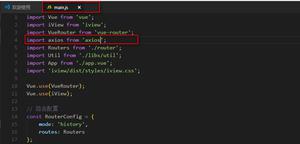在mapToInt之后调用map会有什么好处,如果需要的话
我正在尝试计算列表中值的平方和。以下是三个均计算所需值的变体。我想知道哪个是最有效的。我希望第三个装箱效率更高,因为自动装箱仅执行一次。
// sum of squares int sum = list.stream().map(x -> x * x).reduce((x, y) -> x + y).get();
System.out.println("sum of squares: " + sum);
sum = list.stream().mapToInt(x -> x * x).sum();
System.out.println("sum of squares: " + sum);
sum = list.stream().mapToInt(x -> x).map(x -> x * x).sum();
System.out.println("sum of squares: " + sum);
回答:
如有疑问,请测试!使用jmh,我在100k元素的列表上得到以下结果(以微秒为单位,更好):
Benchmark Mode Samples Score Error Unitsc.a.p.SO32462798.for_loop avgt 10 119.110 0.921 us/op
c.a.p.SO32462798.mapToInt avgt 10 129.702 1.040 us/op
c.a.p.SO32462798.mapToInt_map avgt 10 129.753 1.516 us/op
c.a.p.SO32462798.map_reduce avgt 10 1262.802 12.197 us/op
c.a.p.SO32462798.summingInt avgt 10 134.821 1.203 us/op
因此,从快到慢,您已经拥有:
for(int i : list) sum += i*i;mapToInt(x -> x * x).sum()和mapToInt(x -> x).map(x -> x * x).sum()collect(Collectors.summingInt(x -> x * x))map(x -> x * x).reduce((x, y) -> x + y).get()
请注意,结果在很大程度上取决于JIT优化。如果映射中的逻辑更加复杂,则某些优化可能不可用(较长的代码=较少的内联),在这种情况下,流版本可能比for循环花费4-5倍的时间-
但是,如果该逻辑占用大量CPU资源,差异将再次减小。对您的实际应用程序进行性能分析将为您提供更多信息。
基准代码供参考:
@State(Scope.Benchmark)@BenchmarkMode(Mode.AverageTime)
public class SO32462798 {
List<Integer> list;
@Setup public void setup() {
list = new Random().ints(100_000).boxed().collect(toList());
}
@Benchmark public int for_loop() {
int sum = 0;
for (int i : list) sum += i * i;
return sum;
}
@Benchmark public int summingInt() {
return list.stream().collect(Collectors.summingInt(x -> x * x));
}
@Benchmark public int mapToInt() {
return list.stream().mapToInt(x -> x * x).sum();
}
@Benchmark public int mapToInt_map() {
return list.stream().mapToInt(x -> x).map(x -> x * x).sum();
}
@Benchmark public int map_reduce() {
return list.stream().map(x -> x * x).reduce((x, y) -> x + y).get();
}
}
以上是 在mapToInt之后调用map会有什么好处,如果需要的话 的全部内容, 来源链接: utcz.com/qa/420340.html








